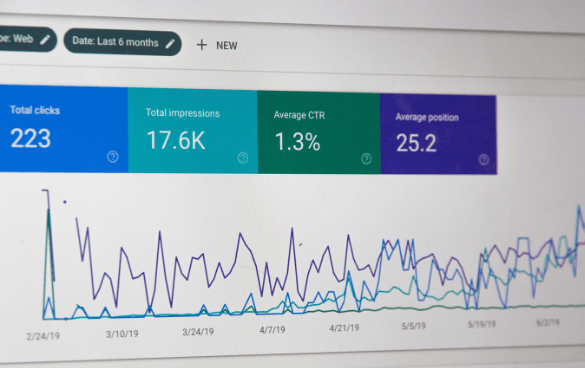Reliable Methods for Remarketing In Google Analytics
Reliable Methods for Remarketing In Google Analytics
Blog Article
Effective Approaches for Remarketing in Google Analytics
In the world of digital marketing, the world of remarketing in Google Analytics stands as a crucial tool for businesses aiming to boost their on the internet presence and conversion prices. Via critical audience segmentation, customized remarketing lists, and engaging advertisement creatives, companies can craft personalized projects that resonate with their target market. Nevertheless, the true success depends on the capacity to constantly refine and maximize these techniques based upon efficiency metrics and information insights. By discovering the nuances of vibrant remarketing and leveraging sophisticated monitoring tools, organizations can unlock the full capacity of their remarketing efforts, bring about increased brand visibility and client interaction.
Target Market Division
Making use of target market division is a crucial technique in maximizing the effectiveness of remarketing campaigns within Google Analytics. By separating your audience into unique groups based on their habits, demographics, or passions, you can customize your advertising and marketing messages to be a lot more relevant and interesting. This strategy permits you to supply personalized advertisements to details sectors, raising the chance of conversion.

In addition, audience segmentation helps you recognize the varying demands and choices of various client groups, allowing you to craft more engaging advertisement creatives and offers. This targeted approach not just improves the effectiveness of your remarketing efforts but likewise enhances overall project efficiency.
Setting Up Remarketing Checklists
To properly apply remarketing methods in Google Analytics, the preliminary step includes producing targeted remarketing lists based upon particular target market interactions. Establishing remarketing listings allows marketers to sector their internet site site visitors into different classifications based on their behavior, such as pages watched, products looked for, or actions taken on the site. By defining these sectors, online marketers can then develop tailored and relevant advertisements that target these particular teams, enhancing the likelihood of conversion.
Remarketing listings can be established up utilizing numerous criteria such as page visits, duration of browse through, certain objective conclusions, and even particular occasions triggered on the web site. This level of personalization enables marketing professionals to tailor their promotions to match the passions and choices of each fractional audience, causing higher interaction and conversion prices.
Furthermore, remarketing checklists can also be created based on data imported from various other resources like CRM systems, permitting even more exact targeting. By setting up these targeted remarketing listings, marketing experts can effectively connect to possible clients who have currently revealed rate of interest in their solutions or products, taking full advantage of the effect of their remarketing campaigns.
Creating Compelling Ad Creatives
After segmenting web site site visitors right into targeted remarketing checklists based upon details target market communications, the following vital action is to craft engaging advertisement creatives that reverberate with each segmented group's preferences and passions. The effectiveness of remarketing campaigns heavily counts on the capacity of these advertisement creatives to catch the attention of the target market and drive them to take the desired action.
To create engaging ad creatives, it is necessary to recognize the one-of-a-kind features of each segmented group (What Is “Remarketing” In Google Analytics?). Customizing the messaging, visuals, and supplies to align with the rate of interests and click over here choices of the target market can substantially boost the chances of conversion. Utilizing dynamic ads that instantly readjust web content based on the individual's behavior can also use this link enhance the customization of the ad experience

Monitoring Performance and Optimization
Efficient tracking of project efficiency and continuous optimization are important aspects of effective remarketing strategies in Google Analytics. To guarantee the performance of remarketing projects, marketers have to regularly track crucial performance metrics such as click-through prices, conversion rates, and return on ad spend. By monitoring these metrics, marketers can obtain valuable understandings right into the performance of their projects and determine areas for improvement.
In Google Analytics, online marketers can leverage tools like conversion tracking and target market division to evaluate the performance of their remarketing projects. Conversion monitoring allows online marketers to track particular activities that customers take after clicking a remarketing advertisement, supplying valuable information our website on the performance of the campaign in driving preferred results. Audience division, on the other hand, enables marketing professionals to divide their target market right into various sectors based upon numerous criteria such as demographics, habits, and interests, enabling for more targeted and personalized remarketing efforts.
Continual optimization is essential for making best use of the effect of remarketing campaigns. Marketing experts ought to make use of A/B testing to try out different advertisement creatives, messaging, and targeting techniques to determine one of the most effective approaches. By on a regular basis assessing campaign performance information and making data-driven optimizations, marketing professionals can make sure that their remarketing projects are achieving the preferred results and driving conversions successfully.
Leveraging Dynamic Remarketing
Utilizing vibrant remarketing can significantly boost the significance and influence of targeted ads in Google Analytics. This innovative method allows marketers to reveal tailored ads to users that have actually formerly visited their website or utilized their mobile application. By dynamically showing service or products that the individuals have shown interest in, vibrant remarketing assists to maintain the brand name fresh in their minds and urges them to go back to complete a purchase.

In addition, dynamic remarketing campaigns can be automated and enhanced in real-time based upon performance information, guaranteeing that the advertisements continue to be pertinent and efficient. By leveraging dynamic remarketing in Google Analytics, marketers can produce much more impactful and targeted marketing campaigns that resonate with their target market and drive results.
Conclusion
To conclude, efficient remarketing techniques in Google Analytics entail target market segmentation, targeted remarketing checklists, compelling advertisement creatives, efficiency surveillance, and dynamic remarketing. By concentrating on customized advertisements, information analysis, and constant optimization, businesses can raise conversion prices and drive engagement efficiently. Leveraging tools like conversion tracking guarantees that advertisements stay appropriate and individualized, resulting in overall success in remarketing initiatives.
With tactical target market division, tailored remarketing checklists, and interesting ad creatives, companies can craft individualized projects that resonate with their target audience. Using vibrant ads that instantly change web content based on the user's actions can likewise improve the personalization of the advertisement experience.
Conversion tracking enables online marketers to track particular actions that users take after clicking on a remarketing advertisement, offering valuable data on the performance of the project in driving desired results.Using dynamic remarketing can substantially improve the significance and impact of targeted ads in Google Analytics - What Is “Remarketing” In Google Analytics?.In verdict, reliable remarketing techniques in Google Analytics include target market segmentation, targeted remarketing listings, engaging advertisement creatives, performance monitoring, and dynamic remarketing
Report this page